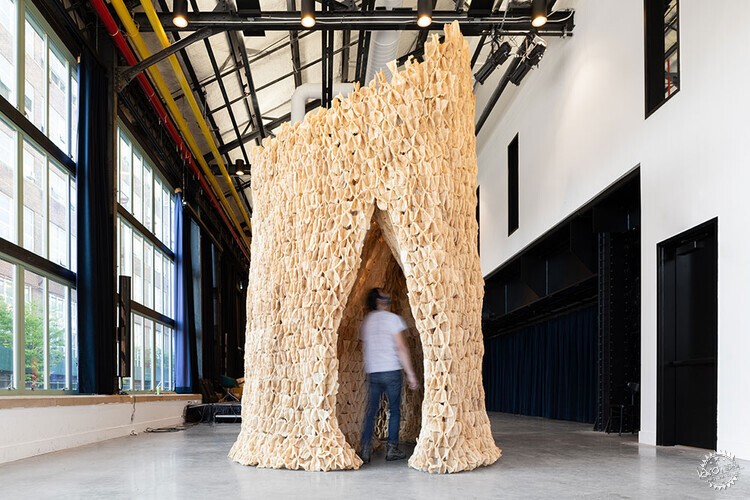
Courtesy of The Living. ImageAlive: A New Spatial Contract for Multispecies Architecture by The Living
生物技术和绿色科技:可持续建筑的新材料世界
Biotechnology and Green Tech: A New Material World for Sustainable Architecture
由专筑网邢子,小R编译
生物技术和材料科学的进步开启了新的材料发展机会,这有可能从根本上改变建筑环境和自然界之间的联系。建筑材料和施工占温室气体排放的11%。AEC行业可以在接下来的时间里为遏制气候变化做出贡献。对普通建筑材料的重新评估是很关键的步骤,可以生长、产生能量、自我修复的生物工程材料,是生物学和材料科学的下一个前沿领域,也可能是通往新型建筑的桥梁。尽管这些领域的创新离主流商业用途还很远,但它有望极大地改变建筑环境的形象。
用于建筑环境的活体材料是一个迅速扩大的研究领域,为一系列广泛的目标服务,从减少碳足迹、优化资源利用、开发创新特性到加强碳封存。活体建筑材料(LBMs)位于设计、材料科学、化学和生物工程的交叉点,包含微生物,并显示出生物特性。下面的研究展示了LBMs材料如何改变建筑。
以有机增长取代传统生产
在科罗拉多大学博尔德分校,活体材料实验室研究了一种新的不含水泥的活体建筑材料,与混凝土不同,它完全可以回收。该团队使用氰基细菌和类似于藻类的绿色微生物,利用二氧化碳和阳光来培养,并制造了一种有助于封存二氧化碳的生物水泥。利用细菌的指数式增长,研究人员培育出了构件,展示了一种新的潜在制造方法。这项技术在现实生活中已有应用,例如,一些公司正在通过在其产品中加入生物水泥来探索增强材料的使用。
Advances in biotechnology and material science are opening new material opportunities, with the potential of fundamentally changing the connection between the built environment and the natural world. Building materials and construction account for 11% of greenhouse gas emissions. The AEC industry can contribute to curbing climate change in the following years, and the re-evaluation of commonplace building materials is one of the most critical steps. Bioengineered materials, which grow, produce energy, self-heal, are the next frontier in biology and material science and potentially a path towards a new kind of architecture. Although innovation in these fields is still far away from mainstream commercial use, it promises to dramatically change the image of the built environment.
Living materials for the built environment is a rapidly expanding area of inquiry, serving a wide array of objectives, from reducing carbon footprints, optimizing the use of resources, developing innovative properties to enhancing carbon sequestration. Sitting at the intersection of design, material science, chemistry, and bioengineering, living building materials (LBMs) contain microorganisms and show biological properties. The following research showcases how LBMs could change the material with which architecture operates.
Replacing Traditional Production with Organic Growth
At the University of Colorado Boulder, the Living Materials Laboratory investigated a new cement-free living building material that, unlike concrete, is entirely recyclable. The team used cyanobacteria, green microorganisms similar to algae that use CO2 and sunlight to grow, and manufactured a bio cement that helps sequester CO2. Harnessing the exponential growth of bacteria, the researchers grew the building blocks, demonstrating a new potential manufacturing method. The real-life application of this technology is already here, as some companies are pushing forward the adoption of these enhanced materials by incorporating biocement in their products, for example.
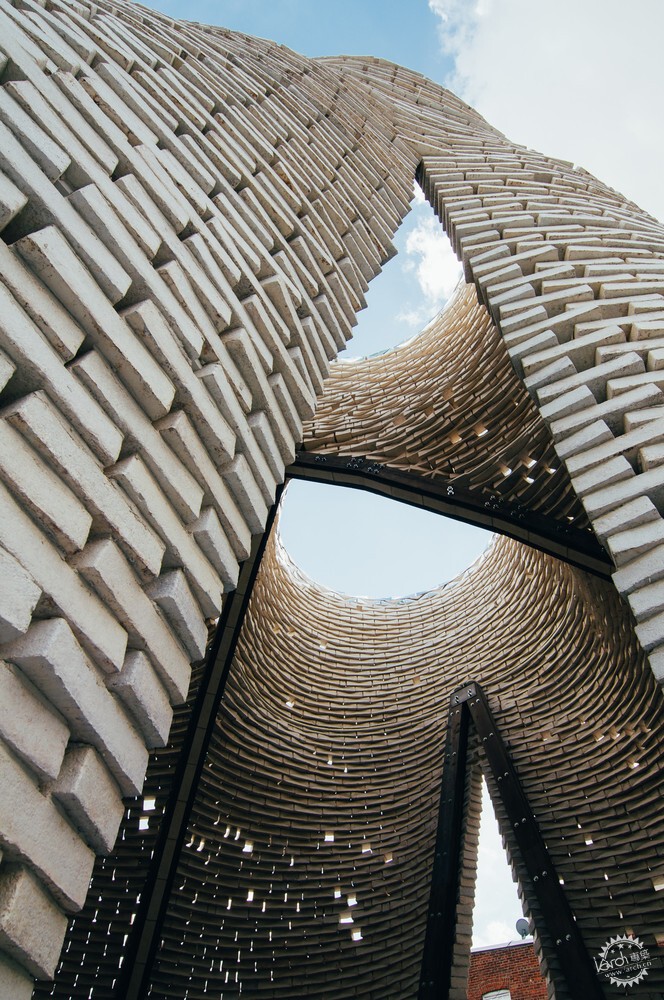
Image © Andrew Nunes
菌丝体是另一个可种植建筑材料的多产探究领域,因为基于菌丝体的材料具有良好的绝缘性能,阻燃且不产生有毒气体。2014年,The Living公司创造了Hy-Fi,这是第一个由菌丝体砖块制成的大型结构,可以在5天内生长完成。在美国宇航局,基于菌丝体的材料被确定为空间建筑的可行选择,因为在需要将运输材料的体积降到最低的情况下,这些材料有可能在现场被种植使用。
自我修复材料,减少资源消耗
由于混凝土占全球碳排放的近9%,许多研究工作的重点是寻找传统混凝土的替代品,重新思考其生产过程或寻找减少需求的解决方案。在伍斯特理工学院,研究人员已经开发出一种自我修复的混凝土,使用一种酶将大气中的二氧化碳转化为碳酸钙晶体,密封毫米级的裂缝并防止材料进一步损坏。与使用细菌进行的自我修复混凝土的实验不同,这个过程更快,而且不会带来任何安全问题。
现实生活中的测试和建筑应用
建筑环境中的生物技术研究项目汇集了诺森比亚大学的生物科学家和纽卡斯尔大学的建筑师、设计师和工程师,致力于开发生物技术,以帮助创造对环境有反应的建筑。研究的重点是生产活的工程材料,这些材料将代谢它们的废物,帮助减少污染,使建筑过程更加有效,甚至产生能量。为了测试建筑规模的研究结果,该研究计划在纽卡斯尔大学校园内建造了一个实验性结构,复制一个家庭空间。在OME内,研究人员将对材料进行实验,开发将家庭废物转化为热量和能源的过程,同时测试新的外墙系统,并研究影响建筑的微生物组。
Mycelium is another prolific area of inquiry for construction materials that can be grown, as materials based on mycelium have good insulation properties, are fire retardants and don’t produce toxic gasses. In 2014, The Living created Hy-Fi, the first large scale structure made of mycelium bricks, which could be grown in 5 days. At NASA, mycelium-based materials are investigated as a viable option for space architecture, precisely for the potential of growing them on-site, in a context where the volume of materials transported needs to be reduced to a minimum.
Self-repairing materials for less resource consumption
With concrete responsible for almost 9% of global carbon emissions, numerous research endeavours focus on finding alternatives to traditional concrete, rethinking its production process or finding solutions for decreasing the demand. At the Worcester Polytechnic Institute, researchers have developed a self-healing concrete, using an enzyme that transforms carbon dioxide in the atmosphere into calcium carbonate crystals, sealing millimetre-scale cracks and preventing further damage to the material. Unlike the experiments with self-healing concrete using bacteria, this process is faster and doesn’t pose any safety issues.
Real-life testing and architectural applications
The Hub for Biotechnology in the Built Environment is a research project bringing together bio-scientists from Northumbria University and architects, designers and engineers from Newcastle University working to develop biotechnologies that would help create buildings responsive to their environment. The research focuses on producing living engineered materials that would metabolize their waste, help reduce pollution, make construction processes more efficient and even generate energy. To test the findings at building scale, the research initiative built an experimental structure within the Newcastle University campus that would help replicate a domestic space. Within OME, researchers will experiment with materials, develop processes to convert household waste into heat and energy, test new façade systems and influence the building’s microbiome.
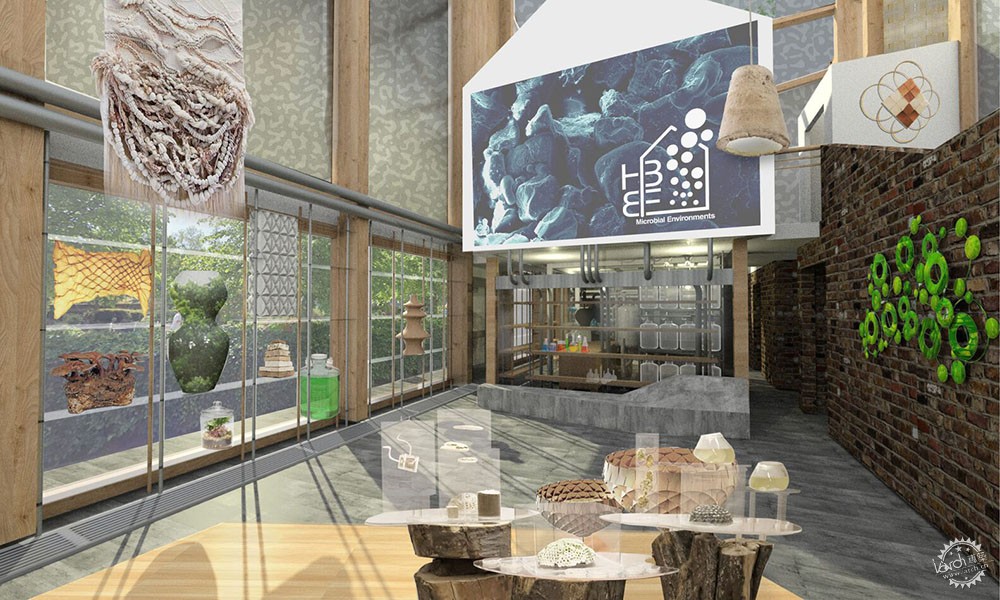
Image © Assia Stefanova
北卡罗来纳大学夏洛特分校的综合设计研究实验室开发了一个可适应的微藻外墙系统,通过集成的光生物反应器改善室内空气质量并生产可再生能源。通过生物变色窗,空气被引入立面系统内,海藻产生的氧气被引入建筑的HVAC系统。新鲜的水藻被定期引入系统,而含碳的水藻则沉在底部,被转移到一个将其转化为生物燃料的组件中。该系统已被调整和开发,以适应商业用途。
The Integrated Design Research Lab at the University of North Carolina Charlotte developed an adaptable microalgae façade system that improves indoor air quality and produces renewable energy through integrated photobioreactors. With the Biochromic Window, the air is introduced within the façade system, and the oxygen produced by the algae is introduced into the HVAC system of the building. Fresh algae are introduced regularly into the system, and the carbon-loaded ones sink at the bottom and are transferred into a component that converts them into biofuel. The system has been adapted and developed for commercial use.
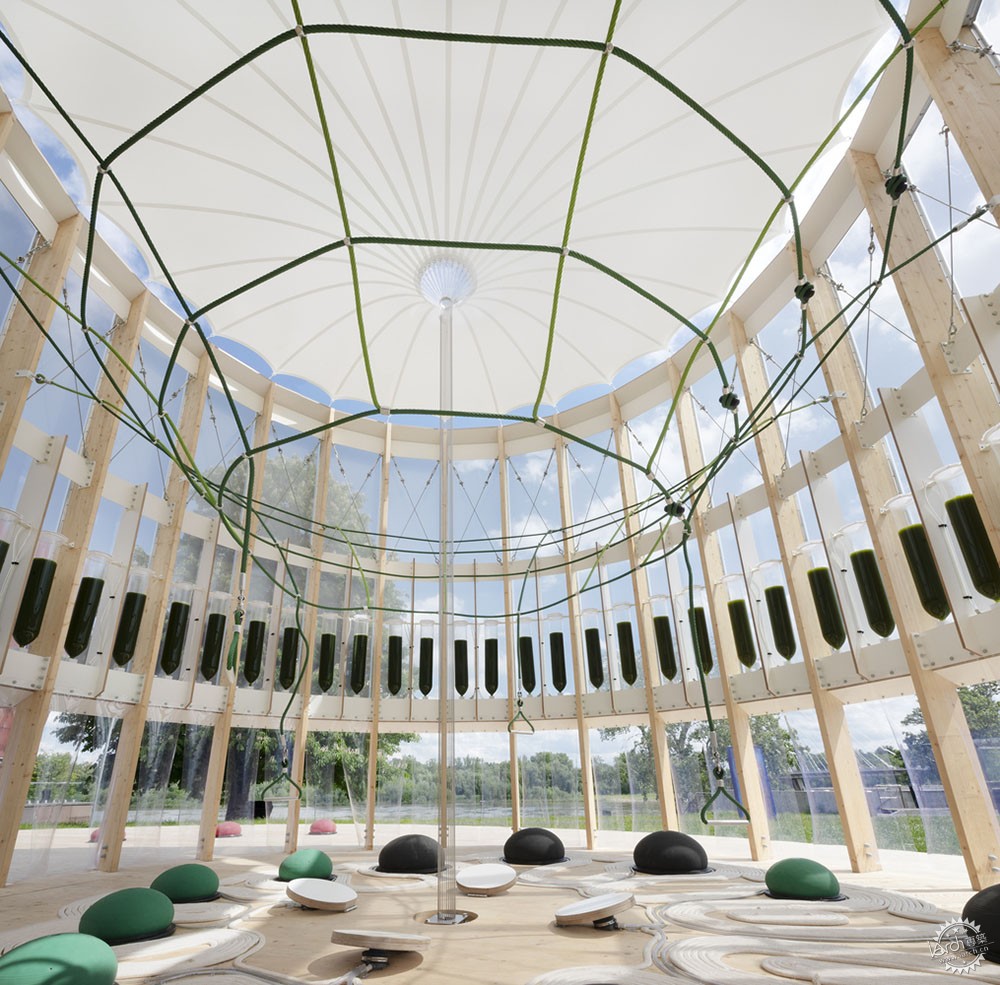
Image © Maja Wirkus
这些来自广泛研究领域的少数例子描绘了一个可持续建筑材料行业的全面形象。进一步说,需要更多的研究来评估安全和生物污染等问题。此外,这些新材料还必须赢得公众舆论的支持,因为公众通常不愿意接受与细菌共存的世界。工程生物材料领域仍处于早期阶段,从实验室研究到商业可行性还有很长的路要走。然而,这项研究开辟了通往材料新世界的道路,并有望将建筑可持续发展提升到新高度。
These few examples from an expansive research field paint a comprehensive image of what a sustainable construction material industry could look like. Going further, more research is required to evaluate issues such as safety and biocontamination. In addition, these new materials would have to win over public opinion, which is usually reluctant towards the bacterial world. The field of engineered living materials is still in its early days, and there is a long way to go from laboratory research to commercial viability. However, this research opens the path towards a new material world and a new level of sustainability in architecture.
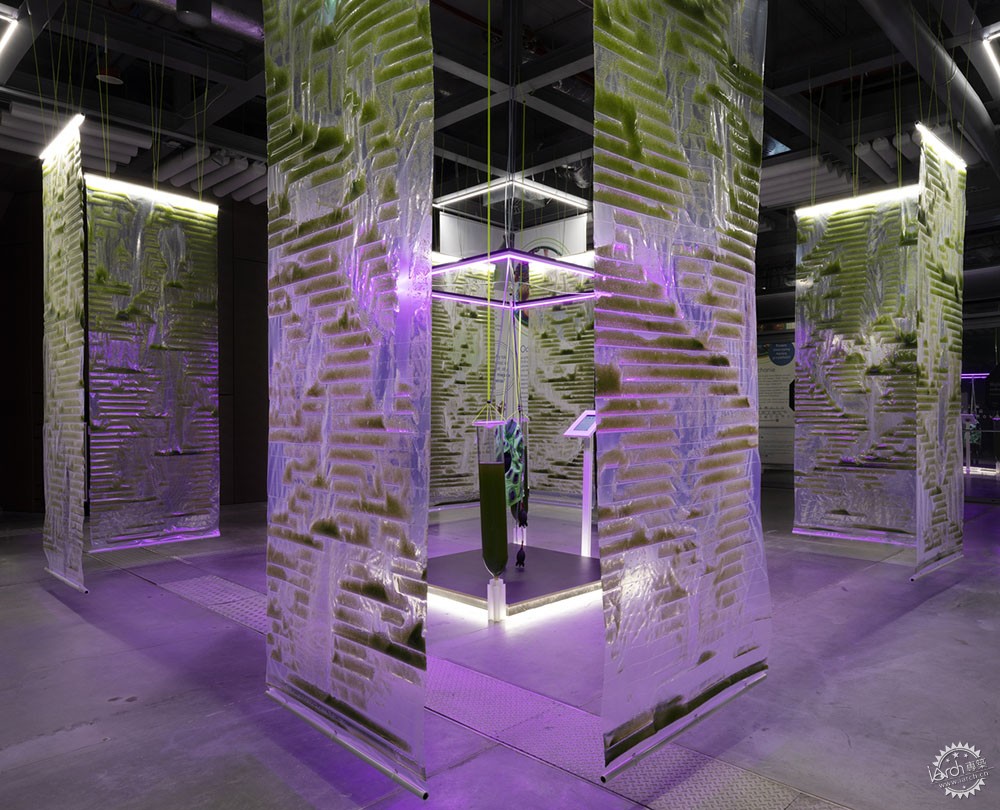
Image © Maja Wirkus
|
|
